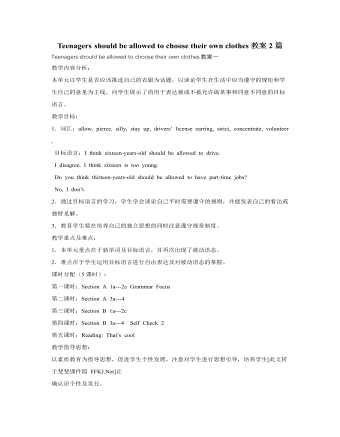人教版新目标初中英语九年级上册Where would you like to visit教案2篇
-
- 页数:38页
- 字数:约 53287 字
- 大小:214.50KB
- 格式:.doc
- 版本:Office2016及以上版本
- 作者:墨韵浅月
Where would you like to visit教案2篇
Where would you like tovisit?教案一
The First Period
Ⅰ.Teaching Aims and Demands
Knowledge Objects
(1) Key Vocabulary
tiring, educational,fascinating, thrilling, peaceful, exotic, trek, jungle, take it easy,
 explore,historic, site
explore,historic, site(2) Target Language
Where would you like to go onvacation?
I’d like to trek through the jungle, because I likeexciting vacations.
2. Ability Objects
(1)Train students to talk about places they would like to visit withthe target language.
(2)Train students to describe vacations with different adjectives.
(3)Train students listening skill.
3. Moral Object,
It′s more interesting to go onvacating somewhere instead of staying at home.
Ⅱ. Teaching Key Points
1. Key Vocabulary
tiring, educational, fascinating, thrilling,peaceful, exotic, trek, jungle, take it easy, explore, historic, site
2. Target Language
Talk about different placeswith the target language.
Ⅲ. Teaching Difficult Points
1. Describe vacations with different adjectives.
2. Talk about different places with the targetlanguage.
Ⅳ. Teaching Methods
1. Teaching by illumination
2. Teaching by doing chain drills
3. Teaching by pairwork
Ⅴ. Teaching Aids
1. A tape recorder
2. Some pictures of different places with famous views
Ⅵ. Teaching Procedures
Step Ⅰ Revision
1. Revise the language points in Unit 6.
Provides some questions, Whatkind of music do you like/love/prefer? What kind of clothes/writers/movies/… do you like/love/prefer?
Then ask two pairs to makemodel conversations to the class to make sure they answer, I like/love/prefermusic that…I prefer writers who…
Next ask students to practisein pairs.
Walk around the classroomlistening to them, correct some errors they may make and be sure they areanswering with sentences with relative clauses.
2. Revise the words and expressions in by dictatingthe following:
lyric, remind of,entertainment, exhibition, gallary, on display, energy, suggest, photograph,suit
Step Ⅱ 1a
At first introduce the keyvocabulary.
Point to the words and teachthe children to read them several times till they can pronounce the wordsfluently and correctly.After that, try to let students explain the adjectives and make upsentences with them. For example, exciting, do like this:
Let’s try to explain some newadjectives in our own words and make up some sentences now. See exciting first. Who can explain it in your ownwords in English?
What does exciting mean?
Help the children to explain it. Exciting means not boring, ormeans hard to be quiet.
Who can make up a sentence withit?
Give an example sentence withit, please.
Ask several ones to say theirsentences to the class. For example,
Surfing makes us exciting.
The boy is very exciting whenhe is watching a football match.
Then do the same with these newwords in the box:
tiring, educational, peaceful, fascinating, thrilling, exotic
Read the instructions to thestudents. Besure that everyone knows what to do.
Tell students to look at theposters in the picture and compare them.
We can see three posters. Tell me what you can see ineach one.
Then discuss the three posterswith students. For Poster One, help students to say, It is a beach. A man with sunglasses issleeping, etc.
Do the same to the other twoposters.
Read the words on each posterto students and then let them read together several times. Ask some ones to tell theChinese meanings of the words to see if they can understand them. Do some explanation ifnecessary.
Call the students attention tothe chart.
Point to vacation 1,2 and 3 inthe chart.
Say, Let’s choose the adjectives fromthe box for the three vacations. The adjectives you choose should correspond with the posters. Now let’s use Vacation 1 as a sample. Which adjectives should wechoose? Who can tell me?
Then ask several students totell the class the words they’ve chosen. Write down their answers on the blackboard like this:
Vacation 1 Take it easy on aFlorida beach!
Adjectives: relaxing, peaceful,boring
Who has got some otheradjectives to describe it? Some other adjectives you know, but not in the box?
Ask some to say more besidesthe ones in the box, such as quiet, lazy.
Write them on the blackboard,too.
Please fill in the chart withthe adjectives now. Note to match the posters.
Get them to fill in the answersby themselves. As they work, move around the room checking their progress and answeringquestions they may have.
Check the answers.
Step Ⅲ 1b
We’ll listen to three studentstalking about where they would like to go on vacation and why. See the sample answers in thechart. Writeyour answers like that while you hear. Look at the three posters in Activity la and dothis part. Each one of the three students, Sam, Gina and Lydia, wants to goto one of the three places.
Play the tape for the firsttime, and tell the students not to write in a hurry, just try to catch the mainidea of the dialogue.
Then play the recording again. Ask them to write theiranswers this time.
Check the answers.
Step Ⅳ 1c
Presentate this dialogue,showing some pictures of the places with great interest all over the world andsay like this:
I’d like to travel to France. I’d love to visit Paris, becauseI like relaxing vacations.
Where would you like to go onvacation, Sam?
Ask one student to answer thequestion.
After that let him or her askanother student. Set off a chain drill like this:
T: I’d love to visit Paris, becauseI like relaxing vacations. Where would you like to go on vacation, S1?
S1:I’d like to climb Mount Emei,because I like dangerous vacations. Where would you like to go on vacation, S2?
Ss :I prefer totravel to the USA, because I like exotic vacations. Where would you like to go onvacation, S3?
S3
After a team finished get thechildren to make their own conversations in pairs.
Ask two students to read theexample in the speech bubbles in Activity la. Tell them to talk about the posters with theirpartners this time.
As students work together, movearound the classroom, offering language support as needed. Ask some pairs to say theirconversations to the class.
Step Ⅴ Summary
In this class, we’ve learned some adjectives thatare used to describe vacations and some other words. We have also learned thetarget language—Where would you like to go on vacation? I’d like to trek through thejungle because I like exciting vacations.
Step Ⅵ Homework
1. Try to remember the new key vocabulary.
2. Write out three similar conversations to theexample in the picture in Activity 1a.
Step Ⅶ Blackboard Design
Where would you like to visit?
Section A
The First Period
Possible answers to Activity 1a:
Vacation 1: relaxing, peaceful, boring
Vacation 2: exciting, tiring, dangerous, educational, fascinating, interesting, fun, thrilling, exotic
Vacation 3: exciting, educational, peaceful, interesting
The Second Period
Ⅰ. Teaching Aims and Demands
1. Knowledge Objects
(1) Key Vocabulary
fall, Niagara Falls
(2) Target Language
Where would you like to visit?
I’d like/hope to visit/see
I’d like/love places where
2. Ability Objects
(1)Train students listening skill.
(2) Train students communicative competence.
3. Moral Object
It can make you know more about the world totravel much.
Ⅱ. Teaching Key Points
1. New words fall, Niagara Falls
2. Listening practice with target language
3. Make communications with target language
Ⅲ. Teaching Difficult Points
1. Train students listening practice with targetlanguage.
2. Help students to make communications with targetlanguage.
Ⅳ. Teaching Methods
1. Listening 2. Pairwork 3. Explanation
Ⅴ. Teaching Aids
1. A tape recorder
2. Some pictures of Hawaii, Mexico and Niagara Falls
Ⅵ. Teaching Procedures
Step Ⅰ Revision
(1) Revise the target language by asking question, Where would youlike to go on vacation?
Get several students to givedifferent answers.
Then ask them to work in pairsto practise with:
Where would you like to go onvacation?
I’d like/love to…because I like… vacations.
(2) Check homework by asking several ones to read their conversations.
(3)Check homework by dictating the following words:
tiring, educational,fascinating, thrilling, relaxing, dangerous, exotic, trek. jungle, take it easy, explore,historic
After dictating, hove studentscheck in pairs. Make a survey by asking them to put up hands to see how many havewritten out all the words correctly.
Step Ⅱ 2a
Read the instructions to thestudents.
Look at the four sentences inthe box.
They are from a conversation,but they are not in the right order. We will listen to a conversation talking aboutgoing on a vacation. We can see the number in from of the fourth sentence. It’s a sample answer
Please write the right numbersbefore the first three sentences in the blanks.
Then play the tape. Students only listen this time. Try to catch the main idea ofthe conversation. Next play the tape again. Students listen and write the numbers in the blanks.
Check the answers.
Step Ⅲ 2b
This activity provideslistening practice using the target language, too.
Read the instructions tostudents, and make sure that they know what to do.
Look at the first column,"Place". Someone doesn’t like going to these places.
Why? Choose the reason for eachplace from the second column. Write the letters of the reasons in the blanks before theplaces/Let’s read the contents in the chart first. Get them to read the placesand reasons several times. Then say, we’ll listen to the same recording again. Listen and match each placewith a reason for not going there. Play the recording again.
Ask students to fill in theiranswers.
Check the answers
Step Ⅳ 2c
Read the instructions to thestudents. Tellthem to use the information in Activities 2a and 2b to role play conversations.
(Holding a picture of Hawaii). I hope to visit Hawaii some day.
Get a student to answer, So doI. I likeplaces where the weather is always warm.
Showing a picture of Mexico,ask two students to make up similar conversations. Note to use the information in Activities 2a and 2b.
Do the same with the thirdplace Niagara Falls.
Say, Now please role play theconversations in pairs, using the information in Activities 2a and 2b. Each pair makes one at least. As the students work, movearound the room checking progress of the pairs and offering help as needed. Ask one or two move pairs tosay their conversations to the class.
Step 5 Grammar Focus
Presentate the conversationbelow by saying to the students and writing it on the blackboard:
Where would you like to visit?
I’d like to go somewhere relaxing.
Draw a line under the wordrelaxing.
Then ask the children the samequestions and tell them to answer in their own words. For example,
I’d like to go somewhere interesting.
I’d like to go somewhere exotic.
After asking several childrento give answers with different adjectives, get them to practice in pairs. Each pair makes twoconversations.
Next ask several pairs to sharetheir conversations with the class.
Then say, the adjectivesusually come before the nouns, such as, an educational vacation, a tiring trip. But in the sentences which areusing the word something or somewhere, the adjective should be put after thepronouns. Forexample:
I’d like to go somewhere fascinating.
I’d love to eat something delicious.
After that, presentate anotherpair of sentences. Say to the students and write down on the blackboard:
Where would you like to visit?
I hope to go to France some day.
Explain sentences with some dayin English orally, like this,
I hope to go to France some day. This sentence means I hope togo to France some day, but I’m not sure I will. Maybe I will go there in the future and maybe I won’t. The sentences with some day are often used toexpress that.
Then have the children make upmore sentences.
Step Ⅵ Summary
In this class, we’ve done some listening practicewith target language. We have also practiced our oral English in pairs.
And we’ve discussed something on grammar.
Step Ⅶ Homework
1. Write out two pairs of sentences like this:
Where would you like to visit?
I’d like to go somewhere relaxing.
Where would you like to visit?
I hope to go to France some day.
2. Practice the target language orally with theclassmates.
Step Ⅷ Blackboard Design
Where would you like to visit?
Section A
The Second Period
Ⅰ. Answers to Activity 2a:
3 4 2 1
Ⅱ. Answers to Activity 2b:
1. b 2. a 3. c
Ⅲ. Grammar Focus:
1. Where would you like to visit?
I’d like to go somewhere relaxing.
2. Where would you like to visit?
I hope to go to France some day.
The Third Period
Ⅰ. Teaching Aims and Demands
1. Knowledge Objects
(1) Key Vocabulary
touristy, spotlight"Singapore, beautiful, heavy, private, downtown, get around, Pack, light
(2)Target Language
Where would you like to go,Kathy?
I’d like to visit Kunming.
2. Ability Objects
(1) Train students reading skill.
(2) Train students skill of communication.
3. Moral Object
Share your experience ontravelling in a city with your classmates and tell them what they should bringif they decide to visit it.
Ⅱ. Teaching Key Points
1. Guide students to read the passage in Activity 3a.
2. The new vocabulary
Ⅲ. Teaching Difficult Point
Help students to talk to theirpartners about the cities they know.
Ⅳ. Teaching Methods
1. Teaching by illumination.
2. Teaching by asking questions.
Ⅴ. Teaching Procedures
Step Ⅰ Revision
1. Revise the target language they learned last classby asking Where would you like to go on vacation? Get several children toanswer I’d liketo…because
2. Check the homework by asking some children to readthe conversations they wrote to the class.
Step Ⅱ 3a
At first introduce the keyvocabulary words.
Teach students to read thevocabulary several times until they can read them out easily and correctly.
Read the passage quickly andtry to answer the questions on the blackboard.
Write these questions on theblackboard:
1. What doesn’t Singapore have?
2. What does Singapore have?
3. Is Singapore also a wonderful place for shopping?
4. What don’t you plan on doing in singapore? why?
5. What is easiest to do in Singapore?
6. What is suggested to bring if you decide to gothere? Why?
A few minutes later(maybe two or three minutes), ask different students toanswer the questions.
Play the video tape ofSingapore for students or show them some pictures.
Next, read the instructions tostudents.
Say, What things do you likeabout visiting Singapore and what things don’t you like? Read the passage again. Circle the things you likeabout visiting Singapore and underline the things you don’t like.
Get them to finish the activityon their own.
Check the answers.
Step Ⅲ 3b
Read the instructions tostudents. Makesure that they know what to do.
Ask two students to read thesample conversation on the left in Activity 3b,
Note to correct anypronunciation errors to make sure the students are providing a good model forthe rest of the class.
Ask another pair to model aconversation with the first group of words on the right, the words in the firstline. Listento them carefully with the whole class to see if they can put the words in theproper places. Then let the whole class practice in pairs. Each pair should make up fourconversations with the information on the right. Walk around the classroom as the students areworking. Listento some pairs and see if they have met any problems. Offer some help as needed. After all the students havefinished practicing, ask some more pairs to share their conversations withtheir classmates.
Step Ⅳ Part 4
Read the instructions to thechildren.
Make sure that they understandit.
Say, First think of a city youknow, everyone. I think of Dalian. What about you?
Ask several ones to tell thenames of the cities they’ve thought of.
Then say, Please write down thename of the city you’ve thought of on the line above city name in the chart.
After that, show some photos ofDalian to the students around the room. Then continue saying, Dalian is a very beautifulcity with wonderful beaches. It has very long coast. It also has quite a few big and nice parks. Some are near the sea and someare not. I like thebig museum of different kinds of sea animals, too. What about you? What do youlike about the cities you’ve written in your book?
Ask two or three to saysomething about their cities.
Then say, Now please fill inthe left box with the things you like about the city.
I’ll write mine on the blackboard, you can use it as asample.
Write the sample on theblackboard, and students write out theirs.
Walk around the classroom anddirect them to write.
After all of them havefinished, go on with the third step.
Now talk to your partner aboutthe things you don’t like.
After they finish talking, goon saying something I don’t like about Dalian to them.
For example, The things inDalian are too expensive.
They are for the rich. And there are too many carsrunning on the streets. It’s very hard for people to cross a street.
Can you say something you don’t like about your cities?
Ask some to say something onthat to the class. Then tell them to fill in the box for things you don’t like. Let them talk to their partnersabout it.
Step Ⅵ Summary
In this class, we’ve learned something aboutSingapore, and we’ve talked about some other places all over the world.
We’ve done a lot of listening,speaking, reading and writing practice using the target language.
Step Ⅶ Homework
1. Write a short passage on the city you talked aboutin class.
2. Try to remember the new words on page 54.
Step Ⅷ Blackboard Design
Where would you like to visit?
Section A
The Third Period
Questions to Activity 3a:
1. What doesn’t Singapore have?
2. What does Singapore have?
3. Is Singapore also a wonderful place for shopping?
4. What don’t you plan on doing in Singapore? Why?
5. What is easiest to do in Singapore?
6. What is suggested to bring if you decide to go there? Why?
Sample answers to Activity 4:
Dalian
Things you like
1. wonderful beaches
2. long coast
3. big and nice parks
4. the big museum of different kinds of sea animals
Things you don’t like
1. things are too expensive
2. too many cars running in the streets
The Fourth Period
Ⅰ. Teaching Aims and Demands
1. Knowledge Objects
(1)Key Vocabulary
customer, save money, pool,culture, dream vacation, travel agency
(2)Target Language
Where would you like to go?
I’d like to go somewhere warm.
2. Ability Objects
(1)Train students listening ability.
(2) Train students to use the target language in oral Englishproperly.
3. Moral Object
To role play the conversationsyou’veheard is a very good way to improve your oral English.
Ⅱ. Teaching Key Point
Train students listening skillby listening to the conversations with the target language.
Ⅲ. Teaching Difficult Point
Help students to role play theconversations.
Ⅳ. Teaching Methods
1. Brainstorm
2. Listening method
3. Pairwork
Ⅴ. Teaching Aid
A tape recorder
Ⅵ. Teaching Procedures
Step Ⅰ Revision
1. Revise the passage about Singapore by asking two orthree students to read it to the class. Make sure that they pronounce each word correctly.
Then let students read it aloudonce by themselves.
2. Check the short compositions they have written athome. Firstlet several ones read theirs to the class. Second, get them to work in pairs to check thecompositions. At last, collect all students compositions. Go over them carefully afterclass.
Step Ⅱ Part 1
This activity reviews thetarget language and introduces new vocabulary.
Read the instructions tostudents.Explain brainstorm like this:
Brainstorm a list of thingsmeans you should write down all the ideas that come into your minds.
Now brainstorm a list of thingsthat are important to you when you go on vacation. Write them down in your exercise books. You should not worry if anidea is silly or if a word is spelled wrong. You can even write a word in their first languagefor the moment.
Ask them to have a look at thetwo model phrases the book provides before they begin. Move around the room offeringlanguage support as needed.
After about three minutes, tellthem to stop writing and thinking.
Let’s review the ideas you’ve thought of together. We will correct spelling andfind the correct English words for any words you don’t know.
Then ask some children to readtheir lists to the class. Write any new words or
phrases they have used on theblackboard. Ask them to discuss the lists in groups of four. Each one reads his or her ownlist to the other three. Then they discuss the words or phrases together. If there is something thatthey are not sure, tell them to show me by putting up their hands. Move around the room and solvethe problems they may have. Help students find the correct English words to express theirideas.
Step Ⅲ 2a
Read the instructions tostudents. Tellthem to guess the meaning of travel agency first. Then explain it like this:
If you plan to have a trip orvacation, you can go to a travel agency. A travel agency is an office that can help you maketravel plans. Also they help you get plane tickets and hotel reservations. Then presentate whale watch andamusement park to the class like below. A whale watch tour means you stay in a ship and goout to the oceaning during the time of year when the whales are migrating, thenyou can see them travelling. Amusement park means a place like disney land. You can do lots of rides andplay lots of games there.
Write the two phrases on theblackboard.
Look at the three pictures inActivity 2a now. We know Jeff has a summer job at a travel agency. We will hear him talking onthe phone with three different people.
Can you see the small box inthe corner of each picture? Listen to the conversations and number the pictures. Write a proper number in eachbox to show the right order of the pictures. Then play the tape for the first time. Tell them only to listen. Play the tape a second time. As they listen to the tapethis time, have the students number the pictures.
Check the answers.
Step Ⅳ 2b
Read the instructions to thechildren.
Tell them to look at the chart. Then read the headingsCustomer, Wants, Doesn’t want and point out the blanks under each one. And let them see the sampleanswer under Wants in the chart. Ask them to read it together. Say, Then first customer wants to go somewhere warm.
I’ll play the recording again. Please write down the thingsthe three customers want and don’t want in this chart as you listen to the recording.
The play the recording again. Students fill in the blankswith the words they hear. Pause the tape several times to give students time to fill outthe chart.
Correct the answers.
Step Ⅴ 2c
This activity provides guidedoral practice using the target language.
Read the instructions to thechildren.
Say, In this activity, you areasked to role play Jeff’s conversation with the information in the chart in Activity 2b.
Ask a pair of students to readthe sample conversation to the class.
Offer more phrases,…to go to a small town,…to go by ship,…to go to a place which is toocrowded, …to travel by plane,…to go to anywhere too far, ect.
Write them on the blackboard.
Then ask students to practicein pairs.
Move around the room checkingthe progress of the pairs and offering help as needed. Ask one or two pairs to saytheir conversations to the class. Correct any mistakes they may have made.
Step Ⅵ Summary
Say, In this class, we’ve done lots of listeningpractice on target language, and we’ve also written and spoken some.
Step Ⅶ Homework
1. Write out the phrases you have brainstormed in Activity1.
2. Write down the conversation in Activity 2c.
Step Ⅷ Blackboard Design
Where would you like to visit?
Section B
The Fourth Period
The answers to Activity 2b:
Customer 1 wants: to go somewhere warm,
doesn’t want: to fly
Customer 2 wants: to go on a nature tour, doesn’t want: to
to anywhere cold
Customer 3 wants: to go somewhere that’s fun for kinds,
doesn’t wants to go to a big city
Some phrases for Activity 2c:
to go to a small town
to go by ship
to go to a place where is too crowded
to travel by plane
to go to anywhere too far
The Fifth Period
Ⅰ. Teaching Aims and Demands
1. Knowledge Objects
(1) Key Vocabulary
provide, firm, offer, spot, Confucius, stele,forest
The Forest of Steles
(2) Reading practice using the target language
(3) Writing practice using the target language
2. Ability Objects
(1) Train students reading skill.
(2) Train students writing skill.
(3) Train students listening and speaking skills.
3. Moral Object
Are you planning to take a tripthis summer?
Write an e-mail to a travelagency in English to get some information on vacations.
Ⅱ. Teaching Key Points
1. The new vocabulary.
2. Read an e-mail.
3. Write an e-mail.
Ⅲ. Teaching Difficult Point
Write an e-mail.
Ⅳ. Teaching Methods
1. Scanning the e-mail to find out the answers
2. Writing
3. Groupwork
Ⅴ.Teaching Procedures
Step Ⅰ Revision
1. Revise the conversation in Activity 2c on page 55by making a conversation with one student like this,
T: Where would you like to go?
Ss: I’d like to go somewhere relaxing.
T: What else can you tell me?
S: I don’t want to go to big noisycities.
After that, ask them topractice in pairs.
Ask several pairs to sharetheir conversations with the whole class.
2. Check their homework.
Step Ⅱ 3a
This activity provides readingpractice using the target language.
At first, introduce the keyvocabulary words.
Teach students to read thewords and expressions several times. Then ask several to read to the class. Make sure that they can readthe words fluently and correctly.
Read the instructions tostudents. Make sure that each student knows what they will have to do.
Go over the statements aboutthe e-mail message with the whole class. Make sure that they can understand all the sixsentences in the box. And tell them to put the six statements in their minds while theyscan the e-mail below.
Say, Boys and girls, pleasescan the e-mail in Activity 3a now. Try to get the main idea of the letter and find outthe answers to the statements. Ask them to scan the letter individually, and write T, F or DKbefore each statement.
After they’ve all finished scanning, checkthe answers with the whole class. Elicit why the false sentences are false at the same time.
After checking the answers,tell the children to read the passage more carefully and prepare to answer thequestions on the blackboard.
After they’ve all finished reading, getsome students to answer these questions.
Encourage them to ask questionson what they don’t understand about the e-mail.
Ask one student to read theletter to the class. Help him or her with the pronunciation. Then let all the students readthe passage several times.
Step Ⅲ 3b
Read the instructions tostudents.
Ask: Who can explain theinstructions in your own language?
Choose two or three among thosewho have put up their hands to explain the instructions in English.
They may say like this, SupposeI work for Ace Travel Agency and I have received the letter from S.T. Zhang. Then it is my duty to reply the e-mail and I haveto tell where they should go on vacation.
After they all know what to do,get them to begin writing. Move around the classroom as they write, offering help ifnecessary. Remember whose passage is excellent and prepare to ask them toread theirs to the class.
After they’ve all finished writing, askthe students who have written very good passages to read theirs to the class.
Let them work in pairs tocorrect the mistakes in the passage they’ve written.
Tell them that they have torewrite the letters after class and bring them to school tomorrow.
Step Ⅳ Part 4
Read the instructions tostudents.
Say something about the threeplaces in the chart. Showing some pictures of these places to the students, say likethis, Qufu is a small city in Shandong Province.
It is famous for Confucius. It was Confucius’ hometown. He was born there.
The Great Wall is the pride ofthe Chinese people. It is very long and it is hard to believe that it was built overtwo thousand years ago.
The Forest of Steles in Xi’an is a great place for peoplewho are interested in writing Chinese with brushes.
What do you think of the threeplaces?
Look at the chart in Activity 4. We can see the sample answerin the box about Qufu in the column of you.
Continue saying, Now pleasefill in the boxes about The Great Wall and The Forest of Steles in Xi’an on your own.
You can use the words above thechart or any other word.
Tell them to write out thethree students names in the proper places in the chart.
Then get them to survey thethree students. Let them work in groups of four.
Ask a pair of students to readthe model conversation in Activity 4 before they begin their own ones.
At last, have several groupsreport the results to the class. Then ask the class where they would prefer to go together.
Step Ⅴ Summary
In this class, we’ve read an e-mail to a travelagency and we’ve also written an e-mail. And we’ve done some reading, writing, listening andspeaking practice using the target language through group work.
Step Ⅵ Homework
1. Rewrite the e-mail which you wrote in class.
2. Try to remember the new words and expressions onpage 56.
Step Ⅷ Blackboard Design
Where would you like to visit?
Section B
The Fifth Period
Answers to Activity 3a:
1. F 2. F 3. DK 4. DK 5. T 6. F
Questions on the e-mail in Activity 3a:
1. Where do S.T. Zhang and the family want to take a trip?
2. What kind of place do they want to go to?
3. What exercise do they especially love doing?
4. What does S.T. Zhang say about the hotel they want to live in?
5. What does S. T. Zhang want the travel agency to do?
6. How long would they like to be away?
The Sixth Period
Ⅰ. Teaching Aims and Demands
1. Knowledge Objects
(1)Key Vocabulary
surf, arctic
(2) Use the following words properly
hope, pack, save, provide, cook
(3) Write an article using the target language.
2. Ability Objects
(1)Train students to use the verbs hope, pack, save, provide and cookwell.
(2)Train students writing skill.
3. Moral Object
Do you want to travel abroad?English
will be very useful for youthen. It isspoken all over the world.
Ⅱ. Teaching Key Points
1. Help students have a self check on the key wordsand target language.
2. Practice using the verbs.
hope, pack, save, provide, cook
3. Write an article.
Ⅲ. Teaching Difficult Points
1. Use the verbs hope, pack, save, provide and cook.
2. Write the article.
Ⅳ. Teaching Methods
1. Teaching by making sentences.
2. Teaching by writing.
Ⅴ. Teaching Aid
The pictures of the four places
Ⅵ. Teaching Procedures
Step ⅠRevision
1. Check the homework by asking students to show theire-mails.
Choose several to read theirsto the class. Then let them work in pairs and read their own letters to thepartners. Atlast, collect all the letters.
2. Have a dictation to see if they can remember thenew vocabulary which they learned last class. Dictate the following ones. provide, firm, offer, spot. the Forest of
Steles, Confucius
Step Ⅱ Part
Focus attention on the box. Invite a student to read thevocabulary words at the top.
You are asked to fill in theblanks with the words. In some cases, you may need to use another form of the word, forexample, adjusting for tense or subject/verb agreement.
Ask students to fill in theblanks on their own.
Check the answers.
Ask students to make their ownsentences with the words, preferably sentences that are meaningful. Move around the room.
Collect a few students answerswith mistakes on the blackboard. Along with the students help correct the mistakes.
Step Ⅲ 2
This activity provides readingand writing practice using the target language.
Read the instructions to theclass. Getthem to look at the pictures.
Say, Can you say out theEnglish names of the four famous places in the pictures?
Ask some students who know thatto tell the names. Write the four names on the blackboard: the Golden Gate Bridge inSan Francisco, the Sydney Opera House, Big Ben in London, the Eiffel Tower inParis.
Then teach them to read thenames several times till they can read them fluently and correctly.
Practice reading the names byshowing some pictures of the four places to students. Get them to say out theEnglish names of the places as soon as they see each picture. Change the pictures more andmore quickly and students do as fast as they can.
After practicing the names,ask, Which these places would you like to visit most? Why? Ask two or threestudents to tell their answers to the class.
Then say, Please say somethingon the place where you would like to visit most to your partner now. Get them to work in pairs. Move around the room as theywork, offering words and sentences as needed.
After they’ve all finished, tell them towrite an article about where they would like to visit most and why. Ask students to complete thework on their own. Move around the classroom and help them.
After they’ve finished writing, ask a fewstudents to read their articles to the class. Encourage the rest of the class to tell themistakes they may have made in their passages.
Work in pairs. Each one reads their ownpassage to the partner. Help correct any mistakes in the passage.
Step Ⅳ Summary
In this class, we’ve practiced using some words. We’ve done some exercises onwriting, too.
Step Ⅵ Homework
1. Review all the language points in this unit.
2. Finish off the exercises on pages 27~29 of the workbook.
3. Make another more sentence with each of theseverbs, hope, pack, save, provide, cook.
4. Rewrite the passage in Activity 2. Try to make sure each sentenceis correct.
Step Ⅶ Blackboard Design
Where would you like to visit?
Self check
The Six Period
Answers to Activity 1:
1. provide 2. cook 3. saving 4. pack 5. hope
Sample answers to Activity 1:
1. My family hope to go to Sydney soon.
2. He is packing all his clothes. He will leave for London tomorrow.
3. We’d better save time for study.
4. The hotel provides breakfast for free.
5. Many foreigners can cook dumplings.
The Seventh Period
Reading: Your own robot
Ⅰ. Teaching Aims and Demands
1. Knowledge Objects
(1) Key Vocabulary
servant, doubtful, artificialintelligence, humanoid, wave, elderly, trapped and so forth
(2) Text: Your own robot
2. Ability Objects
(1) Train students ability of identifying main idea.
(2) Train students ability of understanding words in context.
(3) Train students ability of reading for special information.
3. Moral Object
Have you thought of making your own robot?
If you have, why not try out your idea?
Ⅱ. Teaching Key Points
1. Key vocabulary.
2. Read the text to identify main idea.
3. Read the text to understand words in context.
4. Read the text for special information.
Ⅲ. Teaching Difficult Points
1. Train students reading skill.
2. Train students writing skill.
Ⅳ. Teaching Methods
1. Up-down reading methods
2. Pairwork
3. Groupwork
Ⅴ.Teaching Procedures
Step Ⅰ Part 1
First read the title with thechildren and ask them what they think the article is about. Ask several to tell the classwhat they think the article is about based on the title. If they think of it is aboutrobots, tell them they have done well. Second say to the class, Please look at the pictureon this page. What can you see in it? How many robots can you see? What arethey busy doing? Ask one or two students to describe the picture to the class. Note to correct the sentencesthat they use.
Read the instructions tostudents now.
Go over the three questionswith students and choose three students to give answers to make model ones tothe others. Then ask them to work in pairs, discuss the three questions. The answer will vary.
Tell them to discuss thequestions without reading the article. As the children work, walk around, listen to themand offer any words and sentences they may need.
When all the pairs finishdiscussing, ask some pairs to ask and answer the questions. The others in the class listento them.
Step Ⅱ Part 2
Draw students attention to theinstructions and read the instructions to them.
Look at the chart in Activity 2. There are five main ideas ofthe article in it.
You need to read the articlequickly and get one detail for each of these main ideas. The first one has given as asample.
Go over the five main ideas andthe sample answer with the class.
Tell them A.I. =Artificial Intelligence.
It is a name of a film. Do some more explanation ifneeded. Makesure that each student knows the meanings of the sentences.
Ask students to complete thetask individually first, Then get them to discuss their answers in pairs. Be sure that they discussdetails in English. Encourage students to fill in the form with complete sentences.
Have some students report theiranswers to the class. The others listen and help to correct the mistakes they may make.
Step Ⅲ Part 3
Say, We can see there are somewords indicated in bold in the article. Please guess the meanings of them now.
Then ask some children to guessthe meanings of the bold words, but just guess. Don’t give them the correct answers.
Do you want to know more aboutthe robots? Read the article more carefully this time and you’ll get more knowledge aboutrobots. Pleaseread the article again. And note to read in context. Try to guess the meanings of the words in bold fromthe other words around them. You can also guess the meanings of any words and phrases you can’t understand from the otherwords around them.
Ask students to read thearticle again for comprehension. After a while, ask some students to tell the meanings of thewords in bold by reading and guessing. Discuss their answers with the whole class. Check their answers
Ask students to raise theirhands and say which sentences and words they don’t understand. Explain them.
Read the instructions withstudents and have them look at the example. Ask students to match words to meanings. Remind them to read the storyagain for extra help.
Check the answers.
Step Ⅳ Part 4
Read the instructions tostudents. Askthe first question as a sample to check if they understand what they need to do.Ask students to do the activityindividually. Tell them to read the text again to get help.
Check the answers by askingdifferent students to answer the questions.
Step Ⅴ Part 5
Read the task with students. We know there are manydifferent kinds of robots and people want different robots to do different jobs. Suppose you are a robotscientist and you are going to design a robot pet. What kind of robot do you want to design? What canyour robot do?
Please look at the threequestions in the chart in Activity 5. Think them over. I’ll ask one to present his or her robot to the class.
Let them think for a while. Then ask one good student topresent his or her design to the class. He or she may say like this.
I am going to invent a robotdancer. Itwill look like a very pretty girl. I hope my robot can dance to different kind ofmusic. Whenpeople are tired and want to listen to some music, my robot can perform dancingwhile the music is on. And my robot doesn’t need any other kind of power except the sound of the music.
Then ask the whole class todiscuss their robots in groups of four and fill in the chart with theinformation about the robots.
Ask one or two students topresent their designs to the class. If time permits, get students to make drawings oftheir robot pets or other robot ideas.
Step Ⅵ Summary
We have read a very wonderfularticle about robot. And we have discussed our own robots. We have done much practice oncomprehension.
您可能喜欢的文档
查看更多
人教版新目标初中英语九年级上册Where would you like to visit说课稿8篇
- 页数:33页
- |大小:156.50KB
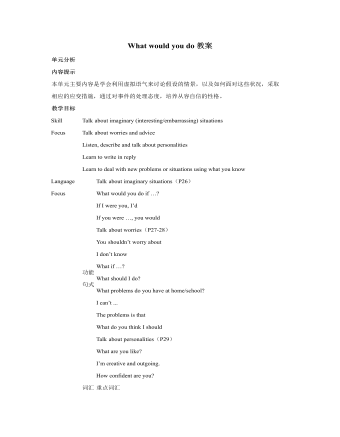
人教版新目标初中英语九年级上册What would you do教案
- 页数:20页
- |大小:593.50KB
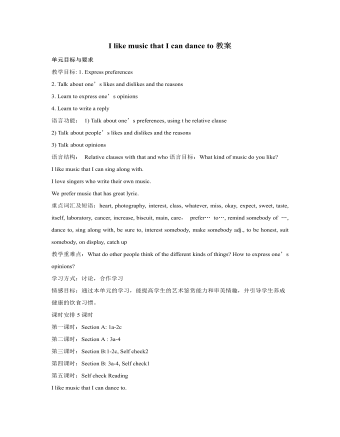
人教版新目标初中英语九年级上册I like music that I can dance to教案
- 页数:15页
- |大小:122.50KB
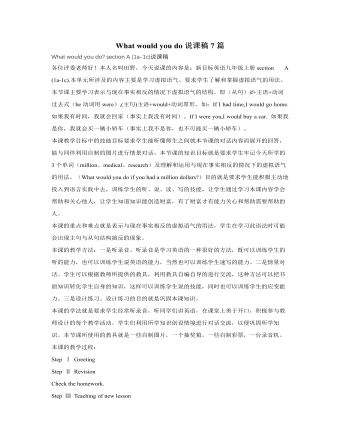
人教版新目标初中英语九年级上册What would you do说课稿7篇
- 页数:43页
- |大小:204.00KB

人教版新目标初中英语九年级上册How do you study for a test教案2篇
- 页数:30页
- |大小:588.00KB
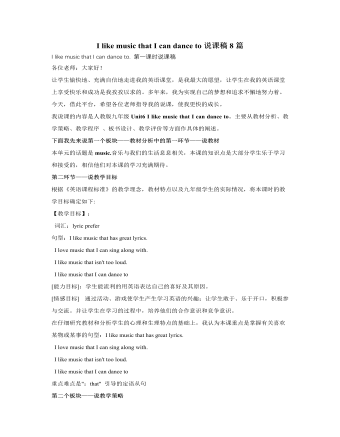
人教版新目标初中英语九年级上册I like music that I can dance to说课稿8篇
- 页数:35页
- |大小:250.00KB
热门课件教案
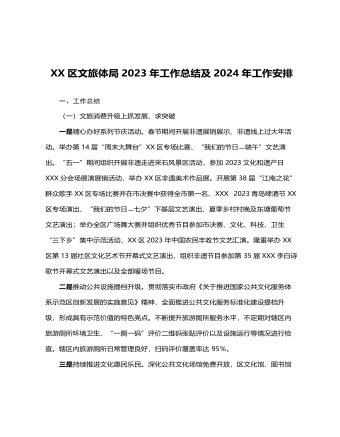
XX区文旅体局2023年工作总结 及2024年工作安排
- 页数:8页
- |大小:32.41KB
- 课件教案
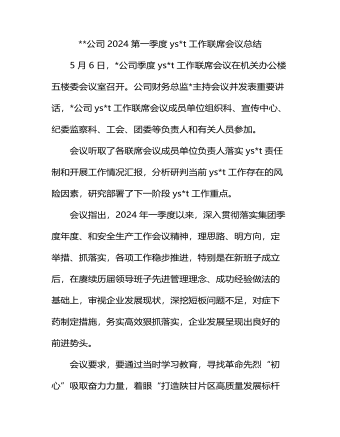
公司2024第一季度意识形态工作联席会议总结
- 页数:6页
- |大小:141.67KB
- 课件教案
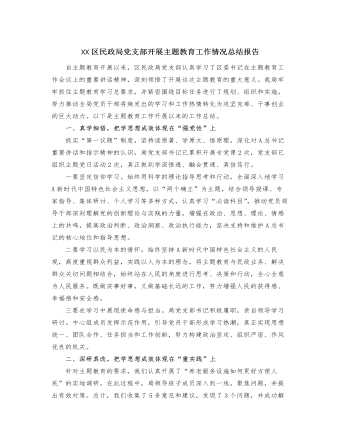
XX区民政局党支部开展主题教育工作情况总结报告
- 页数:3页
- |大小:24.47KB
- 课件教案

交通运输局在巡回指导组主题教育阶段性工作总结推进会上的汇报发言
- 页数:4页
- |大小:33.41KB
- 课件教案
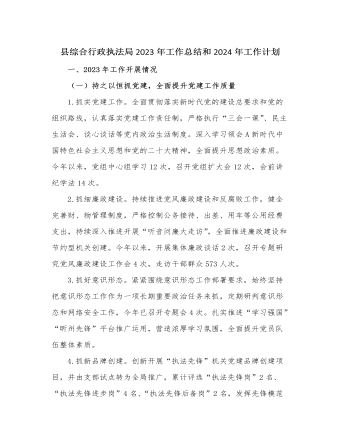
县综合行政执法局2023年工作总结和2024年工作计划
- 页数:8页
- |大小:28.37KB
- 课件教案
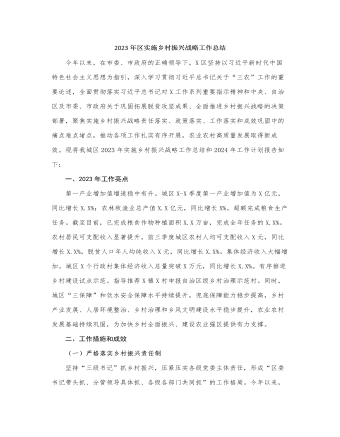
2023年区实施乡村振兴战略工作总结
- 页数:6页
- |大小:27.90KB
- 课件教案
今日更新

5月份主题教育工作情况总结汇报
- 页数:3页
- |大小:136.87KB

××县招商局2024年上半年工作总结
- 页数:12页
- |大小:142.54KB
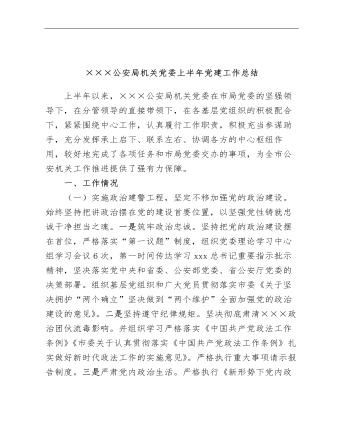
×××公安局机关党委上半年党建工作总结
- 页数:7页
- |大小:186.25KB

《2019—2024年全国党政领导班子建设规划纲要》实施情况的工作总结3800字
- 页数:6页
- |大小:29.16KB
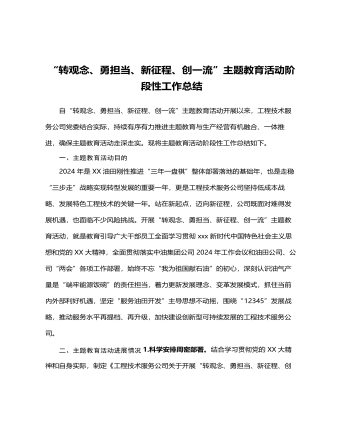
“转观念、勇担当、新征程、创一流”主题教育活动阶段性工作总结
- 页数:3页
- |大小:22.76KB

“四零”承诺服务创建工作总结
- 页数:5页
- |大小:39.83KB
